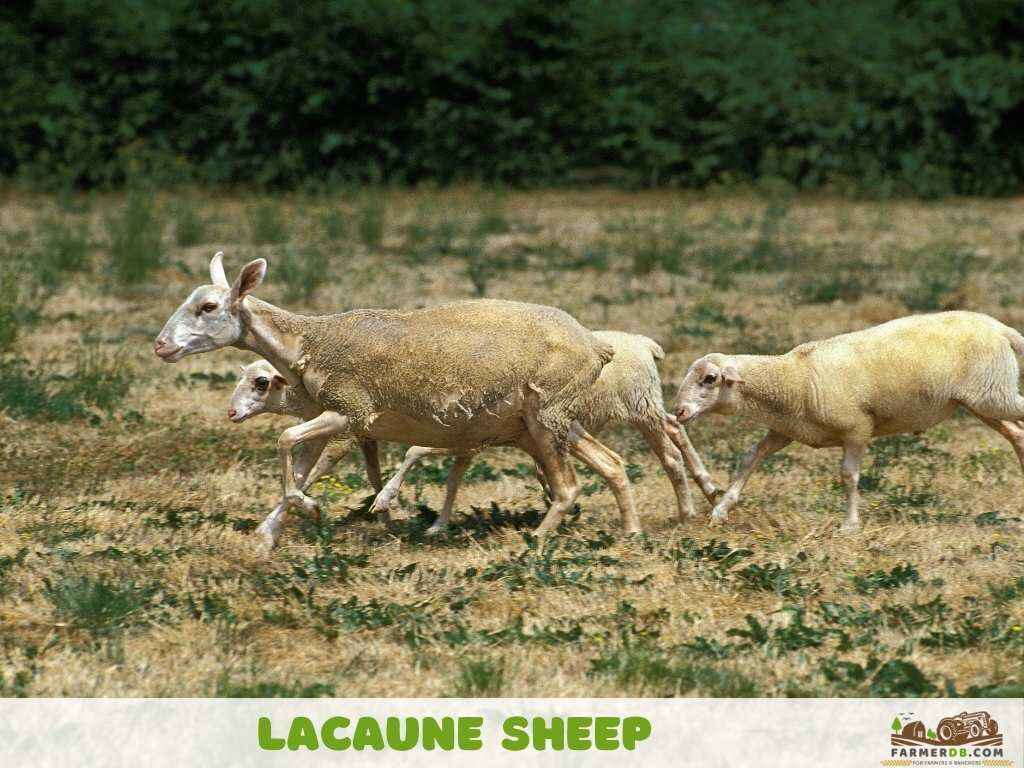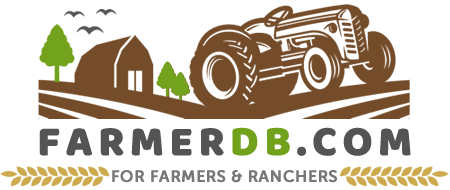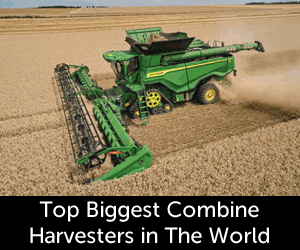The Lacaune sheep is a domestic dairy breed originating from the Lacaune region of southern France.
This breed underwent an intensive selection program led by the French government, aiming to improve its milk production.
Through this large-scale effort, which included the use of artificial insemination, the Lacaune became one of the world’s highest-yielding dairy sheep breeds.

These sheep are primarily raised in France, particularly in the Roquefort region, where their milk is essential for the production of the famous Roquefort cheese.
Before the French government-led selection program, the Lacaune sheep was a dual-purpose breed, raised for both meat and milk production.
Contents
French Government Selection Program
This large-scale breeding program has made the Lacaune the most scientifically analyzed dairy sheep breed in the world.
Since the program began, the breed has experienced an increase of over 1.32 gallon (5 liters) per lactation, along with improvements of 0.0254 oz/gal (0.19 g/L) in fat content and 0.0227 oz/gal (0.17 g/L) in crude protein content.
Over a 30-year period, milk yield per ewe has grown by 6.3% per year, with this gain attributed to 3.9% from better management and nutrition (phenotypic gain) and 2.4% from genetic selection.
These advancements have solidified the Lacaune’s position as a leading breed in commercial dairy farming.
Characteristics
Color
The color of these sheep is white, with no patterns or markings on the body.
Skin
The skin is pink and covered with short, fine wool, except for certain areas like the head and legs.
Head
The head is medium-sized, narrow, and elongated, with a slightly convex profile. The face is typically free of wool and covered in short white hair.

Horns
These sheep are a polled breed.
Face
The face is slender and expressive, with dark eyes and often a slight Roman nose. The muzzle is well-defined, aiding in efficient grazing.
Neck
The neck is medium in length, well-muscled, and slightly arched.
Shoulders
Shoulders are well-proportioned and smoothly attached to the body, ensuring good mobility and ease of movement.
Body
The body is deep and well-rounded, with a strong ribcage and a slightly lean build. The back is straight and long, providing a solid frame.
Legs
Legs are sturdy and well-structured, with clean, wool-free limbs. The hooves are compact, dark-colored, and resistant to wear and environmental conditions.
Udder and Teats
The udder is well-developed, symmetrical, and firmly attached, ensuring efficient milking. Teats are evenly spaced and of moderate size.
Size
This breed has a medium size, with a shoulder height of 27–31 inches (70–80 cm).
Lifespan
These sheep can live for 12 years or longer.
Although their lifespan is long, their productive lifespan is shorter due to the increased strain on the body. As a result, they remain productive for only 5 to 7 years.
Growth Rate
How fast do they grow?
Their growth rate is moderate.
Given that they are more focused on dairy production than meat, it is normal for them not to reach very high growth rates like typical meat sheep breeds. Still, they grow at a good pace, with lambs gaining 0.44 lbs (200 g) per day.
Weight
The weight of these sheep varies between 154.32 to 220.46 lbs (70 to 100 kg), which is similar to other medium-sized sheep breeds like Icelandic or Rough Fell.
Females weigh slightly less than males, with an average weight of 154.32 to 165.35 lbs (70 to 75 kg). Males have an average weight ranging from 209.44 to 220.46 lbs (95 to 100 kg).
At birth, lambs from this breed weigh 7.7 to 8.8 lbs (3.5 to 4 kg).
Slaughtered Time
These sheep have a smaller impact on the meat market compared to dairy production but still provide some meat yield.
They can be slaughtered before 10 months of age, as lambs are preferred due to their tenderness, mild sweetness, and lower fat content. Compared to other sheep breeds, their carcass yield is moderate because they have a lower muscle-to-bone ratio.
Temperament
These sheep are among the friendliest sheep breeds.
They are docile, calm, gentle, and friendly in any type of environment, both with humans and other animals. This great behavior makes them easy to work with, especially during milking.
They have good energy and love to play and explore their surroundings. Once they become confident and comfortable in their environment, they start to display a quiet boldness, meaning they do not scare easily or react nervously to new sounds or unfamiliar objects.
Like any other sheep, when given the opportunity to graze, they enjoy this activity for a large part of the day.
Milk
This sheep breed excels in milk production, not only in terms of quantity but also due to the high-quality properties of its milk. These two factors make it highly popular and the foundation of several cheese productions.
Its milk contains 5.5 to 6% protein and 7 to 7.5% fat, which is higher than cow or goat milk.
The fat content contributes to its rich, creamy texture, making it the foundation of Roquefort cheese production in France. It is also used in other renowned cheeses, as well as creamy yogurt and butter.
Each year, the 2,500 farms within the official Roquefort region supply milk that results in about 20,943 US tons (19,000 tonnes) of AOC Roquefort cheese.
Beyond its milk properties, this breed has a high milk yield, with Lacaune ewes producing an average of 79.25 gallons (300 liters) per lactation, which lasts around 170 days. This means each ewe produces an average of 0.48 gallons (1.8 liters) of milk per day, which is a strong output.
Some individuals exceed 105 gallons (400 liters) under optimal conditions.
Another important point to note about their lactation is that both lactation duration and milk yield remain consistent until their 8th or 9th lactation.
This breed is often compared to the East Friesian when it comes to milk production. While East Friesian sheep produce a higher milk yield, Lacaune milk has more fat and protein, resulting in a higher cheese yield than East Friesian milk.
Raising
Feeding
These sheep need a good diet to support milk production, growth, fertility, and health.
While other breeds can develop on grazing alone, they require more than that, as well as a balanced diet suited to their age and lactation stage.
In principle, you can feed them fresh, high-quality grass, mixed pasture, legumes like clover or alfalfa, and hay and silage.
They also need an energy boost, so their diet should be supplemented with grains like corn, barley, oats, soybean meal, and lupins. While grass and legumes provide fiber and nutrients, grains and concentrates supply the extra energy needed for milk production, especially in the last month of gestation and during lactation.
It is important to feed grains in moderation to avoid digestive issues.
For growing lambs, you can start with a combination of milk and creep feeding, then transition to creep feeding alone.
Keep in mind that Lacaune lambs are weaned starting at 5 weeks of age, which is earlier than other breeds. This is because their milk must be used for dairy production.
As supplements, they should have mineral licks and salt blocks, as well as access to fresh water at all times.
Avoid feeding them moldy feed and copper-rich feeds, as they are sensitive to excess copper.
Environment
You can raise them in various systems, including extensive pasture-based, semi-intensive, and intensive systems.
Since they are highly adaptable, they offer flexibility in choosing the right system. The decision should be based on what works best for you as a farmer, rather than just for the sheep.
| System Type | Description | Key Features |
|---|---|---|
| Pasture-Based System (Extensive Grazing) | Sheep roam freely on natural grasslands, relying on available forage for nutrition. | – Requires large land areas with a variety of forage. – Low-cost system but dependent on seasonal pasture conditions. – Best suited for regions with mild climates and consistent grass growth. |
| Semi-Intensive System | A mixed approach combining natural grazing with additional feeding when necessary. | – Sheep graze during the day but receive supplemental feed such as hay, silage, or grains. – Provides better nutritional control to enhance milk production and reproductive success. – Suitable for farms with limited pasture availability. |
| Intensive System (Indoor or Zero-Grazing) | Sheep are housed in controlled environments where their diet is fully managed. | – Requires significant investment in feed, infrastructure, and labor. – Diet consists of forage, silage, and concentrated feeds. – Ensures precise nutrition and health management for maximum milk yield. |
Climate
They do well in temperate regions with moderate temperatures and seasonal variations.
But if you live in a colder or hotter climate, it is still possible to raise them with the right adjustments to ensure their comfort and health, such as:
- Hotter climate: you must provide shade, ventilation, and constant access to water to prevent heat stress.
- Colder climate: you should ensure they have a rich, nutritious diet and proper shelter to keep them warm and healthy.
Shelter
They need proper shelter to keep them healthy, comfortable, and secure. The need for shelter varies depending on the climate they are raised.
In cold climates, a well-ventilated barn keeps them warm and protected from harsh weather conditions such as strong winds, heavy rain, and snow.
In hotter climates, a simple shaded area or a three-sided field shelter provides a cool place to escape from the sun and avoid heat stress.
Another important factor is lambing. Ewes need a dry, safe place to bond with their newborn lambs, protect them from other sheep, and remain stress-free, which helps increase milk yield.
How many sheep per acre?
You can raise 6 to 8 sheep per acre under high-quality pasture conditions.
From this starting point, you can adjust the number based on your specific conditions, considering factors such as diet, climate, and management.
The amount of supplemental feed you provide directly affects the number of sheep you can keep per acre. More supplemental feed means sheep will consume less fresh grass, allowing you to increase stocking density.
The climate also plays a major role in pasture quality. If you live in an area with low rainfall, pasture growth will be limited, requiring you to reduce the number of sheep per acre to ensure they receive enough forage.
Once you place your sheep on the land, it is important to monitor both the animals and the pasture. Adjust the stocking rate if you notice signs of overgrazing or weight loss in the sheep.
Breeding
Lacaune sheep can start being bred at the age of 10 to 12 months. For rams, you can start at exactly 10 months, while for ewes, it is best to wait a bit longer, until 12 months.
They are fertile, with an overall fertility rate of 92 to 94%, and can be bred naturally by introducing the rams to the ewes. Artificial insemination is also common in this breed due to special breeding programs aimed at improving the breed’s traits.
They are seasonal breeders, cycling in autumn, from September to December. The ewes have a gestation period of 147 to 150 days (5 months) and give birth to an average of 1.8 lambs per lambing. Twins are also common in this breed, which is why it is recommended to wait longer before the first breeding. If the ewe’s body is not mature enough, there is a risk of losing her or the lambs.
You do not need to assist during lambing, as they have an easy birthing process, but it is still good to be nearby and observe to ensure everything goes smoothly.
After lambing, the ewe displays strong maternal instincts, taking good care of her lambs, and milk production is more than sufficient to raise them.
Health Issues
A common health issue in this dairy breed is mastitis. Aside from that, you should watch for common sheep diseases such as parasites, foot rot (especially in humid climates), hypocalcemia, and respiratory infections.
Why should you raise it?
This breed is a good choice if you are considering starting a dairy production business, as long as you have a market nearby to sell the milk or cheese. The strongest markets for sheep dairy products are in Spain, Italy, Switzerland, and some parts of North America. If you are not close to these markets, distribution might be more challenging.
For homesteaders, Lacaune sheep are a great option if you want a high milk yield for your family or if you’re interested in making homemade cheeses. Their rich, high-fat milk is ideal for cheesemaking and other dairy products.
What you have to consider is that due to their milk production demands, they require proper nutrition. You will need to ensure a balanced diet with the right ratio of fiber and grains to maintain their health and milk yield.
Advantages
- Strong genetic improvement
- Longevity
- High milk yield
- Rich milk composition
- Efficient milking
- Great ferility rate
- Good adaptability
- Ease of lambing
- Great matenral instincts
Disadvantages
- Moderate growth rate
- Higher nutritional demand
- Seasonal breeding
- Prone to mastitis
- Market dependency
References
Do you have any experience with the topic discussed here?
Would you like to improve the information shared and contribute your practical knowledge on the subject?
Your real-world experience as a farmer or rancher could greatly benefit other members, and the community would deeply appreciate your contribution.


